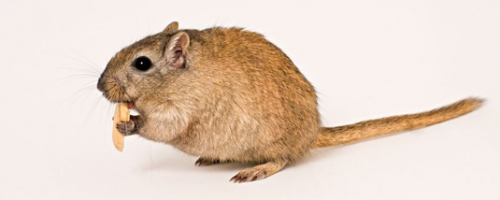How gerbils orient in the light of the setting sun

A light brown remains light brown: For gerbils, the fur color of their conspecifics appears identical under different lighting conditions. The ability of color constancy in rodents has been demonstrated for the first time by Munich neurobiologists.
A green apple is green, but the green is not always the same. In varying light conditions—like at sunset—the spectrum of the light that is reflected by the fruit and falls on our retina, changes. Nevertheless, we continue to perceive the color of the apple as green because the human brain compensates for the influences of illumination by evaluating the color and brightness composition across the entire visual field. This capacity is known as color and brightness constancy and is important for object recognition. Researchers at the LMU Munich and the Bernstein Center Munich, led by Dr. Kay Thurley and Privatdozent Dr. Thomas Wachtler, have now investigated whether rodents also possess this remarkable perceptual ability. Their findings are published in the current issue of the Journal of Vision.
In the study, the researchers showed gerbils colored patches on different colored backgrounds. The animals were looking at a screen while sitting on a sphere that worked like a treadmill. They were thus able to virtually move towards the stimuli and select one of it as response. During the experiment, half of the animals had to identify the object in which the patch appeared more greenish than its background. The other animals had to identify the object they perceived as bluish compared to its background. When the rodents gave the correct answer, they received a food reward.
"The gerbils reliably recognized the correct patches despite varying color compositions across the experimental trials," explains Thomas Wachtler. Hence, under different lighting conditions the rodents consistently perceive a green apple or a brown fur as green or brown, respectively. Moreover, they also perceive the brightness of an object as constant, as the researchers demonstrated in another experiment. Gerbils are thus the first rodents shown to have the ability of color and brightness constancy. The result suggests that other animals may possess this perceptual ability, too.
"For gerbils, which are diurnal and crepuscular animals, the ability to accurately identify objects despite changing lightning conditions is essential for survival. They orient using their sense of vision to forage or recognize conspecifics," says Kay Thurley, main author of the study. The result has significant implications for neurobiology: "Gerbils are a popular animal model in auditory neuroscience. But in contrast to other rodents, gerbils also have well developed vision, making these rodents especially suitable for experiments in virtual realities," Thurley says.
More information: "Contextual processing of brightness and color in Mongolian gerbils." Journal of Vision January 14, 2015 vol. 15 no. 1 article 13 DOI: 10.1167/15.1.13
Journal information: Journal of Vision
Provided by Ludwig Maximilian University of Munich















